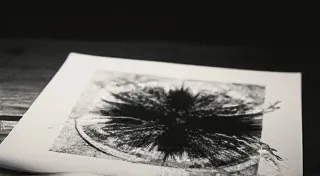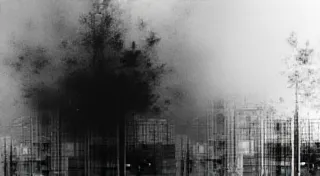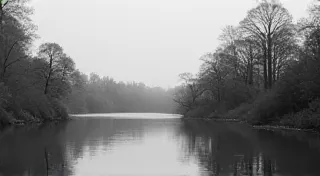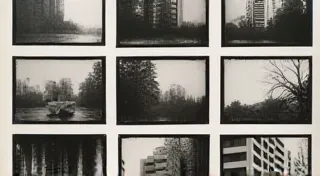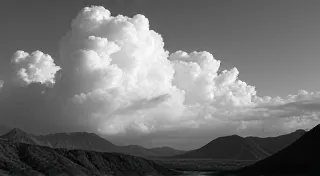Troubleshooting Common Darkroom Printing Problems
Printing in the darkroom is a wonderfully rewarding process, but it's rarely without its challenges. Even experienced photographers encounter issues. This article will walk you through some common darkroom printing problems – streaking, fogging, and uneven contrast – and provide practical solutions to get you back to creating beautiful black and white prints. Before we dive into troubleshooting, it's worth ensuring you have a good understanding of the foundational elements of the process. Choosing the right darkroom paper is critical for achieving the desired results; consider factors like contrast, tonal range, and surface texture.
Streaking: The Ghostly Marks on Your Print
Streaking refers to those unwanted lines appearing on your prints, often looking like vertical or diagonal paths. They can be incredibly frustrating! Here's a breakdown of causes and remedies:
- Cause: Uneven Developer/Fixer Application: Often caused by a worn or uneven squeegee, or a roller that’s not applying even pressure.
- Solution: Examine your squeegee/roller. Clean it thoroughly. If worn, replace it. Ensure even pressure is applied during development and fixing. A slower, more deliberate motion can help.
- Cause: Developer or Fixer Residue: Leftover chemicals from previous prints can cause streaks.
- Solution: Rinse your trays and rollers meticulously between prints. Consider a tray cleaning solution to ensure complete removal of chemicals.
- Cause: Film Emulsion Issues: While less common, scratches or imperfections on the film negative can translate into streaks on the print.
- Solution: Handle negatives with extreme care. Use archival sleeves.
Streaking can stem from a variety of factors, and meticulous attention to detail in your workflow is key. One simple mistake can manifest as unsightly marks on your finished print. Ensuring a clean workspace and well-maintained equipment are your best defenses.
Fogging: The Gray Haze Over Your Print
Fogging is the general greying or loss of contrast in your print. It makes your blacks look muddy and your highlights lose their detail. Here’s what can cause it and how to fix it:
- Cause: Light Leaks: This is the most common culprit. Any light entering the darkroom during development or fixing will fog the print.
- Solution: Thoroughly check your darkroom for light leaks. Pay close attention to door and window seals, cracks, and gaps around equipment. Use a flashlight to check for leaks - if you can see the light, it can fog your print. Sealing gaps around windows and doors is essential.
- Cause: Contaminated Chemicals: Using previously used developer or fixer can lead to fogging.
- Solution: Mix fresh chemicals for each printing session. Never reuse developer or fixer. Properly store chemicals when not in use.
- Cause: Developer Over-Development: Developing for too long can exhaust the developer and cause it to fog the print.
- Solution: Use the correct development time according to the paper’s instructions and your desired contrast. Experiment to find the ideal time.
Fogging is a particularly insidious problem as it subtly degrades the quality of your print. It's a constant battle against unwanted light and depleted chemicals. Understanding the lifecycle of your chemicals is crucial. When chemicals are exhausted, they can introduce fogging and alter the characteristic of the developing process. Many darkroom photographers find that mastering the art of the complete guide to film development provides a strong foundation in understanding chemical processes that translates directly to printing.
Beyond the usual suspects – light leaks and exhausted chemicals – consider factors like humidity. High humidity can also contribute to fogging. Keeping your darkroom environment as stable as possible will minimize these issues.
Uneven Contrast: When Your Print Looks Washed Out or Harsh
Uneven contrast means your print lacks tonal range – it might look too flat (lacking shadows) or too harsh (lacking highlights). Achieving the right level of contrast is a delicate balancing act, heavily influenced by your negative's characteristics and the paper you choose.
- Cause: Incorrect Contrast Filter: Using the wrong filter for your negative’s contrast can result in uneven contrast.
- Solution: Experiment with different contrast filters. Start with a neutral filter (usually #3) and adjust from there. Understanding the characteristics of different filters is key.
- Cause: Developer Exhaustion: As developer is used, it changes, altering the image contrast.
- Solution: Keep track of how many sheets you’re printing with a given batch of developer. Replenish or discard the developer according to the paper's recommendations.
- Cause: Incorrect Paper Grade: Using the wrong grade of photographic paper for your negative can result in uneven contrast.
- Solution: Understand the different grades (e.g., cool tone, warm tone, hard, soft) and experiment until you find the best grade for your negatives. For complex negatives with a wide range of tones, carefully selecting the appropriate paper grade is vital for translating the image accurately. Many photographers find that choosing the right darkroom paper is the single most important factor in achieving a satisfying final print.
Contrast is often directly linked to the degree of dodging and burning applied during printing. If you're struggling to control contrast, consider refining your techniques for selectively exposing different areas of the print. Mastering the art of print masking can be an invaluable skill in achieving precise tonal control, allowing for targeted adjustments to specific areas of the image.
Troubleshooting Beyond the Basics
While the above covers common issues, darkroom printing can be a complex process with nuanced problems. Here are some less frequent challenges and potential solutions:
- Paper curl: Can be caused by uneven drying. Place prints between sheets of acid-free paper under weight to dry flat.
- Bromide stains (brown spots): Often due to chemical contamination. Thoroughly clean trays and equipment.
- Uneven development (streaks or blotches): Check your developer's pH and ensure consistent temperature.
Preventative Measures
Ultimately, the best way to avoid darkroom printing problems is through preventative measures:
- Keep a meticulous log: Record everything - chemicals used, development times, filter choices, etc.
- Cleanliness is paramount: Regularly clean your darkroom and equipment.
- Test strips are your friend: Always run test strips to determine the optimal exposure and contrast.
- Understand your materials: Become familiar with the characteristics of your paper, chemicals, and negatives.
Troubleshooting darkroom printing problems can be challenging, but by systematically checking your equipment, chemicals, and techniques, you’re well on your way to producing consistent, beautiful black and white prints. The patience and attention to detail required are richly rewarded by the unique and satisfying art of traditional darkroom printing.

